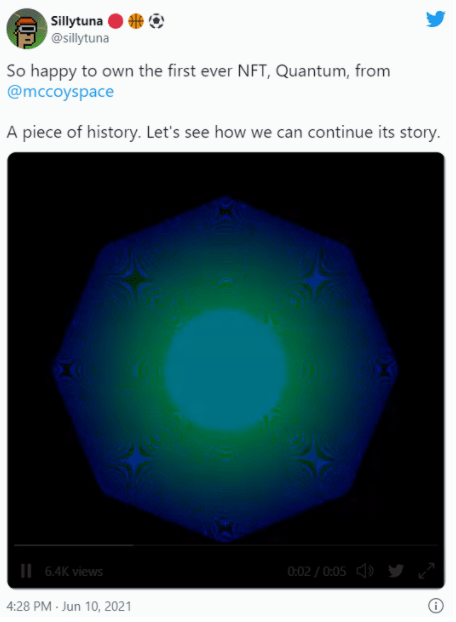NFTs or non-fungible tokens have made their mark in the crypto space, receiving incredible hype along with criticism: allowing digital art creators to create virtual art and for investors to make quick money by flipping artwork. With the Bored Ape Yacht club being one of the highest-selling NFT artworks, one might ask: “How can an Ape JPEG be able to soar to such a level?” – Well, that is the nature of non-fungibility: the ability to announce sole ownership of a rare product comes with a price, and for the Bored Ape Yacht club, that price is 100 ETH.
The first-ever NFT was created or “minted” on the Namecoin blockchain on May 2, 2014, created by artist Kevin McCoy using a technology developed with coder Anil Dash. The two conceptualized a system that would enable digital content artists to sell, track, and take ownership of their works, often shared without credit. This Non-Fungible Token eventually sold in July 2021.
How do they work?
NFTs allow the tokenization of digital assets such as art, music, domain names, collectibles, and even real estate. They solve the problem of proof of ownership. How? Through blockchain. An NFT can only be assigned to a single address; when NFTs are created or “minted” through smart contracts, ownership is managed through the unique ID and metadata that’s unreplicable. This metadata is then added to the blockchain, where the NFT ownership is then validated.
Use Case
NFT use-cases are limited but have a wide range of functions. For example, supplies of NFTs in gaming have risen in the last year; examples include Axie Infinity, The Sandbox, and NightLife Drifting. These games often allow rare in-game cosmetics and collectibles to be sold online to their highest bidder. NFTs are also being considered in the real-estate world, where transferring ownership of property is painstakingly time-consuming; NFTs, on the other hand, can do this instantly through smart contracts.
Where can I buy them?
Currently, the biggest marketplace for NFTs is OpenSea over the Ethereum blockchain, known for its astronomically high gas fees, which has deterred new buyers from entering the market. However, Solana and Binance Smart Chain each have their own platforms to trade NFTs, with Coinbase set to release their own soon.
NFTs are still in their primitive forms and are likely to have greater adoption and use-cases in the future. Although they are primarily used for art at present, we will have to wait and see how NFTs will integrate into our future.



